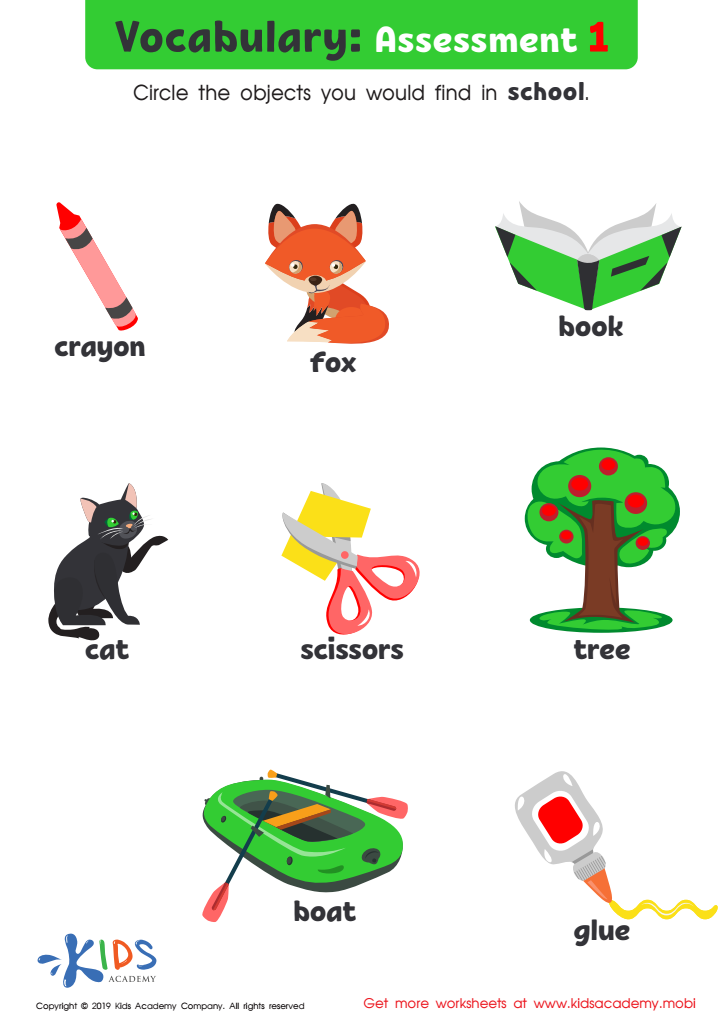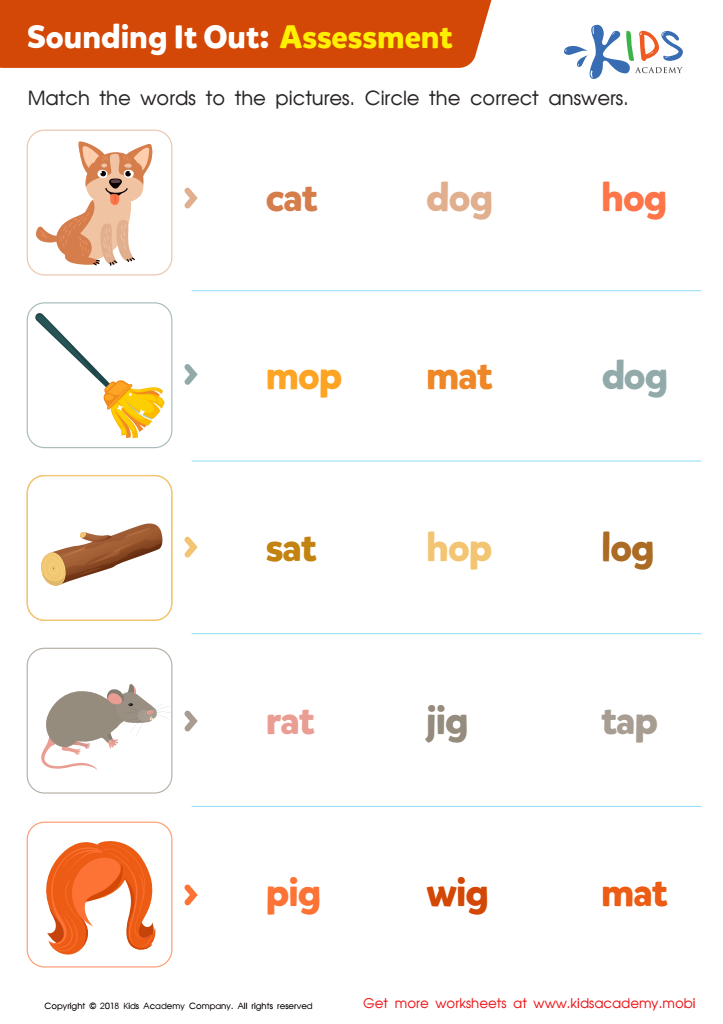Normal Building Vocabulary worksheets activities for Ages 3-5
2 filtered results
-
From - To


Vocabulary: Assessment 1 Worksheet


Sounding it Out: Assessment Worksheet
Normal Building Vocabulary worksheets activities are an invaluable tool in the realm of language learning and development. These activities are crafted with the specific aim of enhancing a learner's vocabulary, which is foundational for effective communication, comprehension, and overall linguistic proficiency. Here are several reasons why these worksheets are exceptionally useful.
Firstly, Normal Building Vocabulary worksheets activities are structured to systematically introduce new words in an engaging context, making the learning process more enjoyable and less daunting. Through varied exercises like matching words to their definitions, filling in the blanks, and word puzzles, learners are exposed to new vocabulary in a dynamic way that reinforces retention and understanding.
Secondly, these activities encourage repeated exposure to words in different contexts, which is a critical factor in vocabulary acquisition. By encountering words multiple times and in various scenarios, learners are more likely to internalize their meanings and proper usage. This repetition solidifies their grasp on the new vocabulary, making it easier for them to recall and employ these words in their own speech and writing.
Moreover, Normal Building Vocabulary worksheets activities are designed to cater to a wide range of learning styles. Whether a learner prefers visual aids, hands-on activities, or learning through context, there is something for everyone. This inclusivity ensures that all learners, regardless of their preferred learning method, can benefit from these activities.
Additionally, these worksheets serve as a valuable resource for both learners and educators. They can be used in a classroom setting to support lesson plans or as a tool for independent study. This versatility makes them an essential component in any language learning toolkit.
In conclusion, Normal Building Vocabulary worksheets activities play a crucial role in language education by making the process of acquiring new words enjoyable, effective, and accessible to all learners. Their structured approach, focus on repetition, inclusivity, and practicality underscore their significance as a tool for enhancing vocabulary and fostering linguistic proficiency.
 Assign to My Students
Assign to My Students














